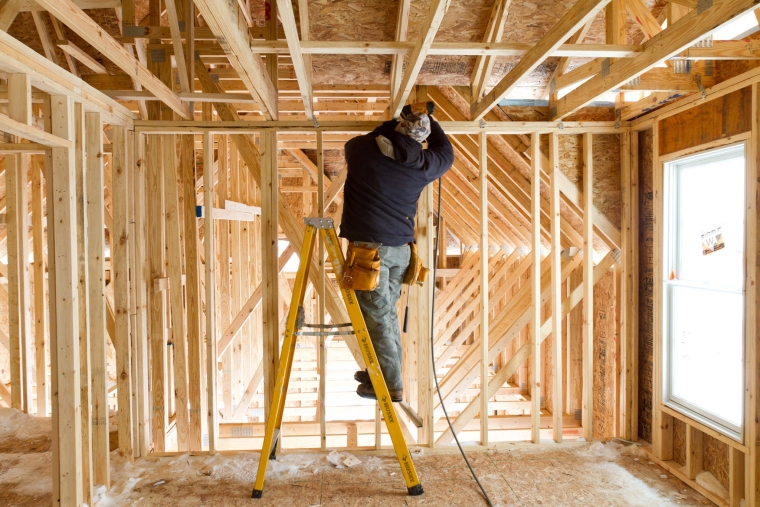
The average estimated construction cost of the new homes consented throughout New Zealand has been in a slow but steady decline since the second quarter (Q2) of last year.
Interest.co.nz's latest quarterly analysis of Statistics NZ's building consent figures shows the average estimated build cost (excluding land) of new dwellings peaked at $466,084 in Q2 2024, then slowly declined in each of the following three quarters to $446,310 in Q1 this year.
That's a decline of $19,774 (-4.2%) over that nine month period.
That drop in build costs does not appear to be a result of the homes being consented getting smaller.
When costs peaked in Q2 2024 the average size of the new homes consented was 142 square metres, and in Q1 2025 it was 141 square metres.
However, the figures also show that the average estimated build cost per square metre peaked at $3285 in Q3 2024, then declined to $3159 in Q1 2025, a decline of $126 per square metre (-3.8%).
However, these figures do not necessarily means that the building costs for things such as such as materials and labour are in decline.
It may be that builders and developers are opting for slightly less expensive designs and specifications for their projects, in what is an increasingly competitive and price sensitive market.
One of the biggest declines in build costs over the last year has been for retirement village units.
Their average estimated build cost peaked at $551,909 in Q2 2024, then declined to $396,033 in Q1 2025, a drop of $155,876 (-28.2%).
Over the same period, the average size of the retirement village units consented declined from 133sqm to 123sqm (-7.5%), while the average estimated build cost per square metre declined from $4160 to $3209 (-22.9%), signaling perhaps a shift to a more affordable product offering in the retirement sector.
The full set of building consent data, showing the average size and estimated build costs for all of the main dwelling types - houses, apartments, townhouses and retirement units, is available here.
The same data is also available for each of the main urban regions: Auckland, Waikato, Bay of Plenty, Wellington, Canterbury and Otago.
The comment stream on this story is now closed.
4 Comments
However, these figures do not necessarily means that the building costs for things such as such as materials and labour are in decline.
That's the problem with just following averages.
Even with the retirement homes, the fact the average size is a decent amount smaller could imply that for a while, the market was building a greater amount of larger, higher spec units.
The monthly stats for building consents show a massive decline in retirement units. I have noted a number of built units now being let rather than”sold” due to elderly owner occupiers struggling to sell their family home at an acceptable price.
That and retirement units will increasingly fall out of vogue
Recent price to enter a retirement village in NP for 120m2 house. Can't recall exactly but I think that included a small single garage. Between $900k and $950k. That also includes the house land and other buildings and amenities. Pretty steep to me. Won't get any where near that for my old 155m2 house with a 31m2 detached large single garage on about 670m2 of land. Haven't crunched the numbers but aside from the social aspect of a retirement village, I suspect I could get paid help, both in the house, bought out meals, possibly some medical help two three times a week and live reasonably comfortably.

We welcome your comments below. If you are not already registered, please register to comment
Remember we welcome robust, respectful and insightful debate. We don't welcome abusive or defamatory comments and will de-register those repeatedly making such comments. Our current comment policy is here.